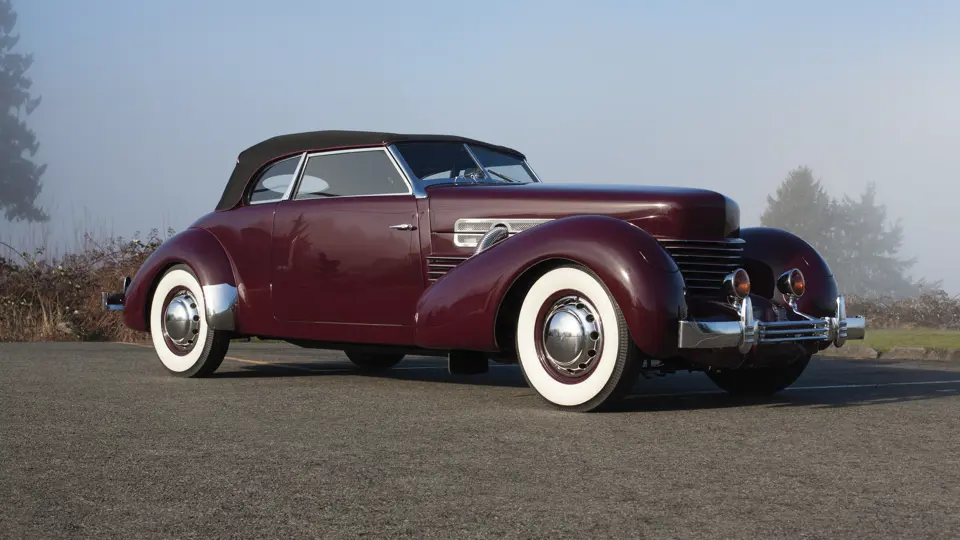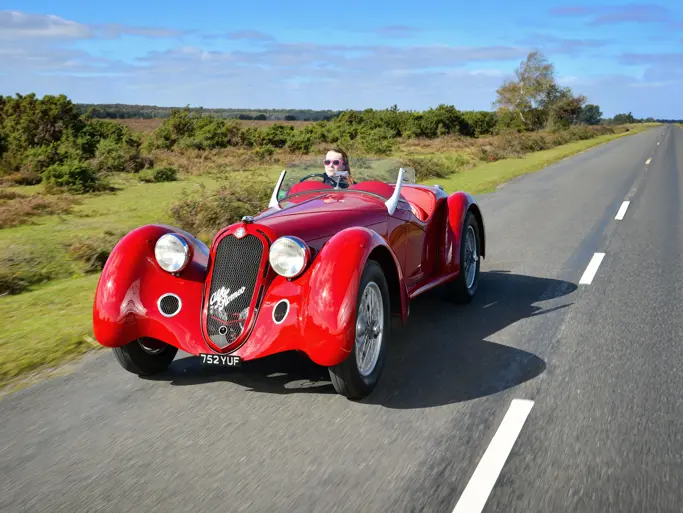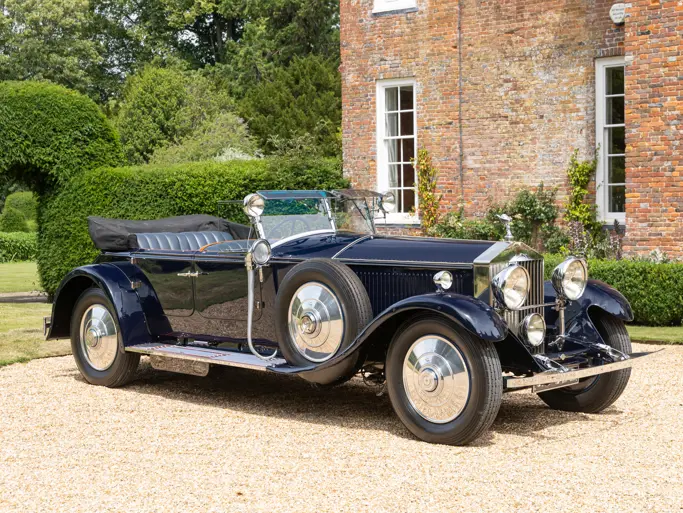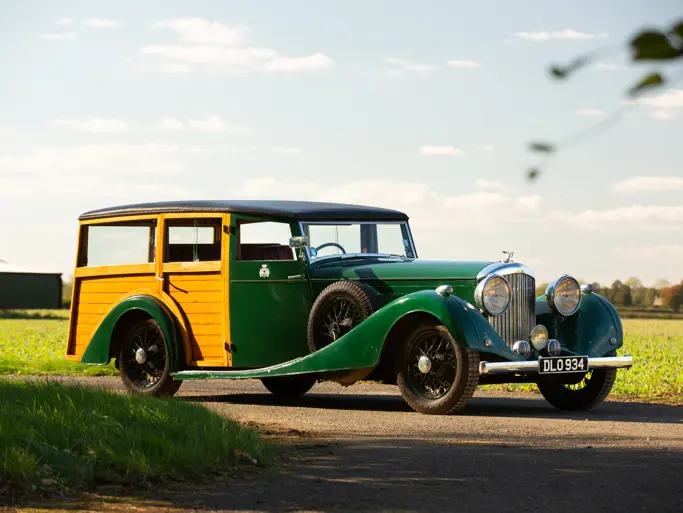170 bhp, 288 cu. in. supercharged L-head V-8 engine, four-speed pre-selector manual transmission, independent front suspension, rear semi-elliptic suspension with leaf springs, and four-wheel hydraulic drum brakes. Wheelbase: 125 in.
The Duesenberg Model J became available with a supercharger in 1932. Three years later, the eight-cylinder Auburn could also be had with a blower. All that was left was to fit the engine to the new Cord of 1936, and a year later, as the 810 evolved into the 812 and production was fully underway, Auburn Automobile Company’s most flamboyant line received supercharged power as a popular $415 option on all models.
Lycoming began with the 810’s stock V-8 engine, revising the design with a modified firing order, lowered compression ratio, more extreme cam grind, and a unique, larger Stromberg AA-25 carburetor. The engine exhaled through a functional four-pipe chrome side exhaust, which was an identifying mark of all supercharged Auburn, Cord, and Duesenberg products. It was believed to have been added to the Cord by stylist Alex Tremulis, later of Tucker fame, and engineered into being by none other than August Duesenberg.
The supercharged Cord had a factory-quoted power output of 170 horsepower, although Lycoming employees later recounted numbers as high as 195. The factory sent two properly equipped Beverly Sedans to the Indianapolis Motor Speedway, where, driven by Ab Jenkins and Billy Winn, they recorded the highest average speed over a 24-year period at the Brickyard which was, over 80 mph, and it captured the famous Stevens Trophy. That record would stand until 1954.
The Phaeton offered here, chassis number 812 31917 H, is identified as having been a factory-supercharged example by virtue of its five-digit serial number, which begins with a 3. It has resided for many years in Washington State and spent several decades with late enthusiast John Brewin, in whose ownership it was long recorded by Cord historians.
After Mr. Brewin’s passing, the Cord was stored for several years before being sold to its present owner, who has owned it for two decades. He recently spent six years having it restored back to its original condition, with exhaustive work being performed by local Washington craftsmen. Necessary metalwork in the body was completed to factory standards, while the engine and transmission were rebuilt. The engine itself, FC 2633, is the original supercharged one for this car, as listed in both of Josh Malks’s respected Cord books, and it was found and reunited with the car by the present owner. The owner notes that the supercharger has improved modern internal parts and oil plumbing, and a pressure gauge was installed on the gearbox, both as recommended in the Auburn Cord Duesenberg Club Newsletter. These ensure that everything in the engine is operating as it should.
This Rich Maroon beauty, freshly complete after six years of painstaking work, is likely to be one of the nicest factory-supercharged 812 Phaetons known, and with its original engine present under the hood, it is one of the most authentic. It stands ready to be shown with pride.



 | Amelia Island, Florida
| Amelia Island, Florida


